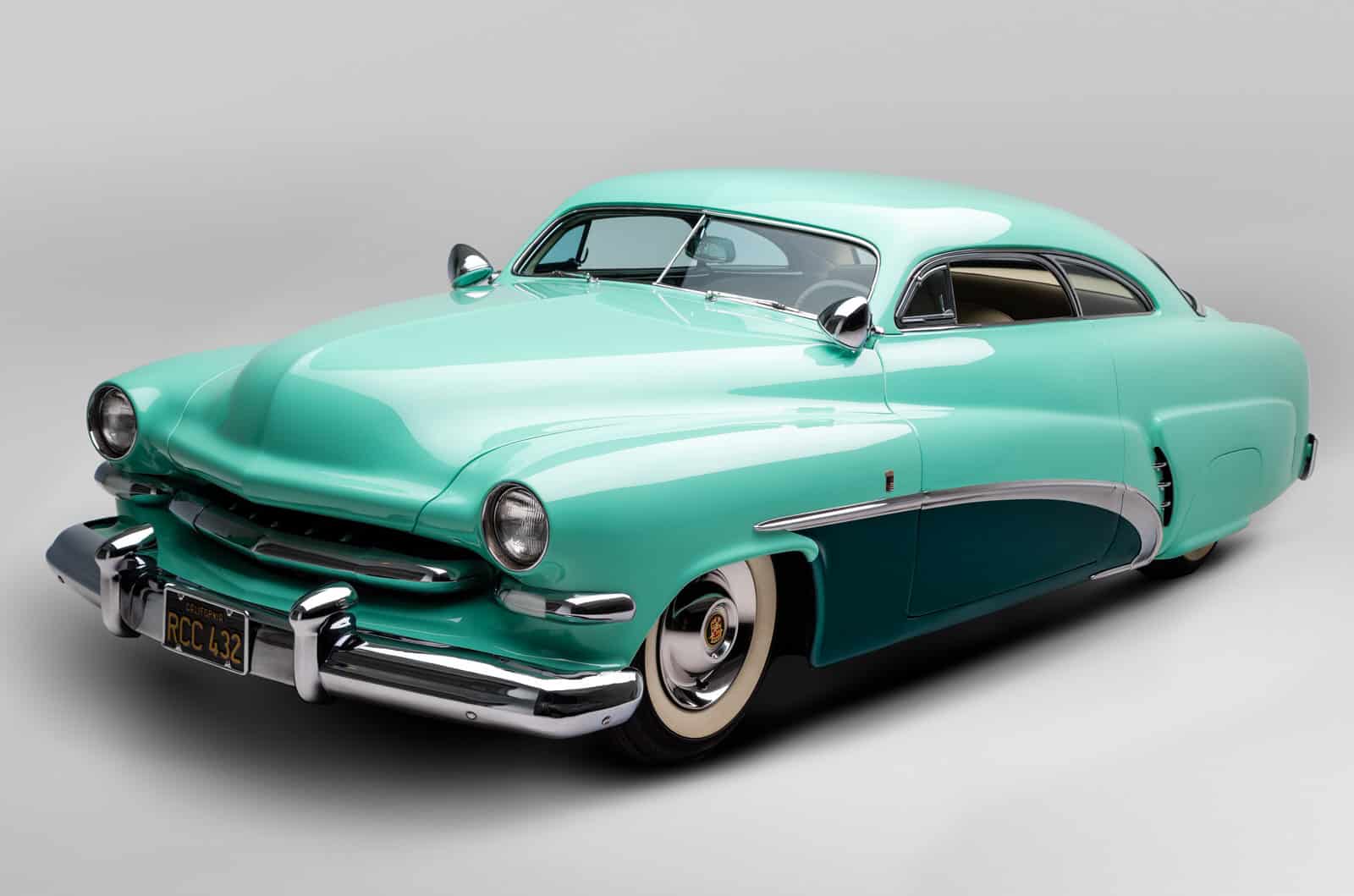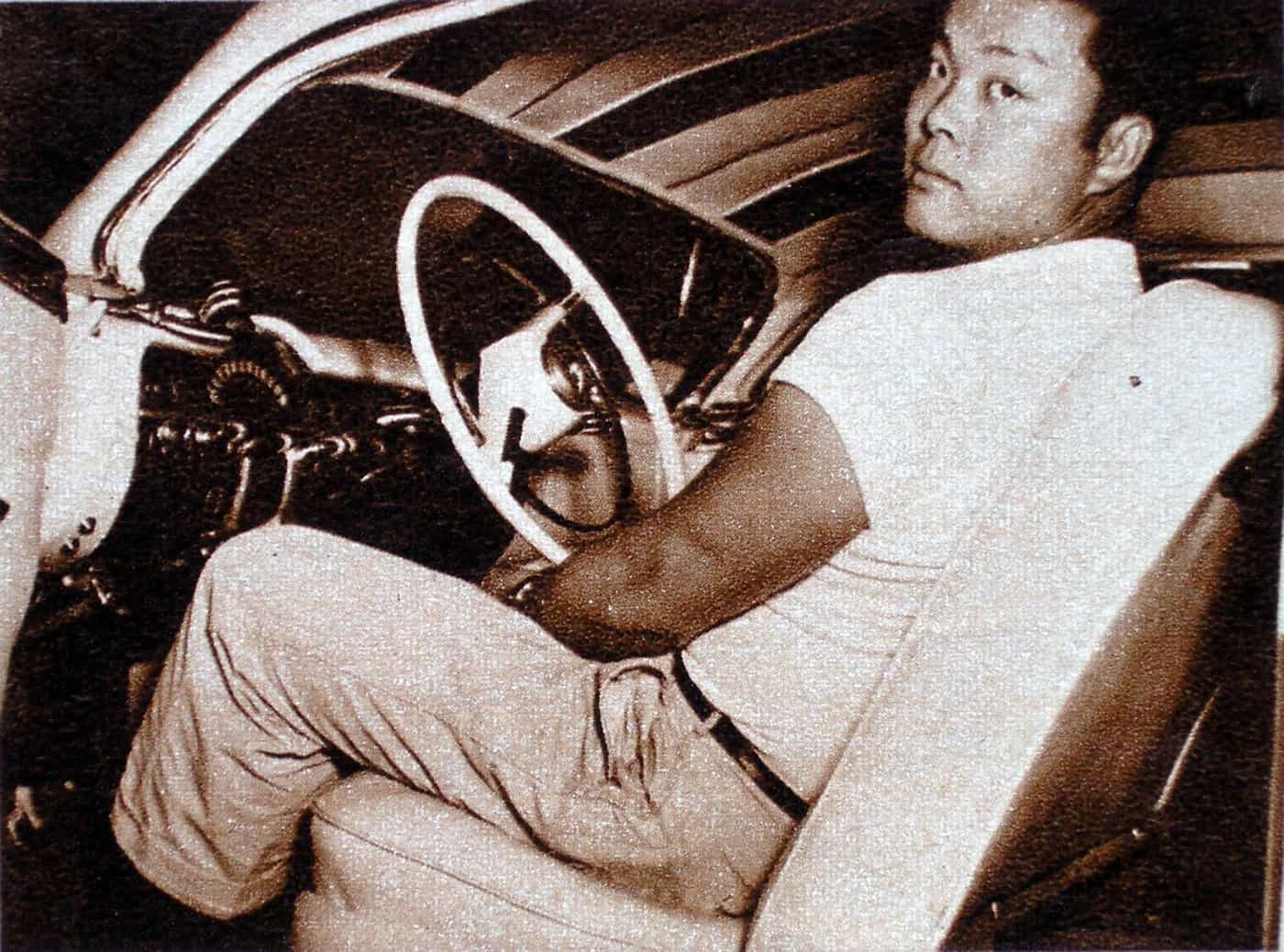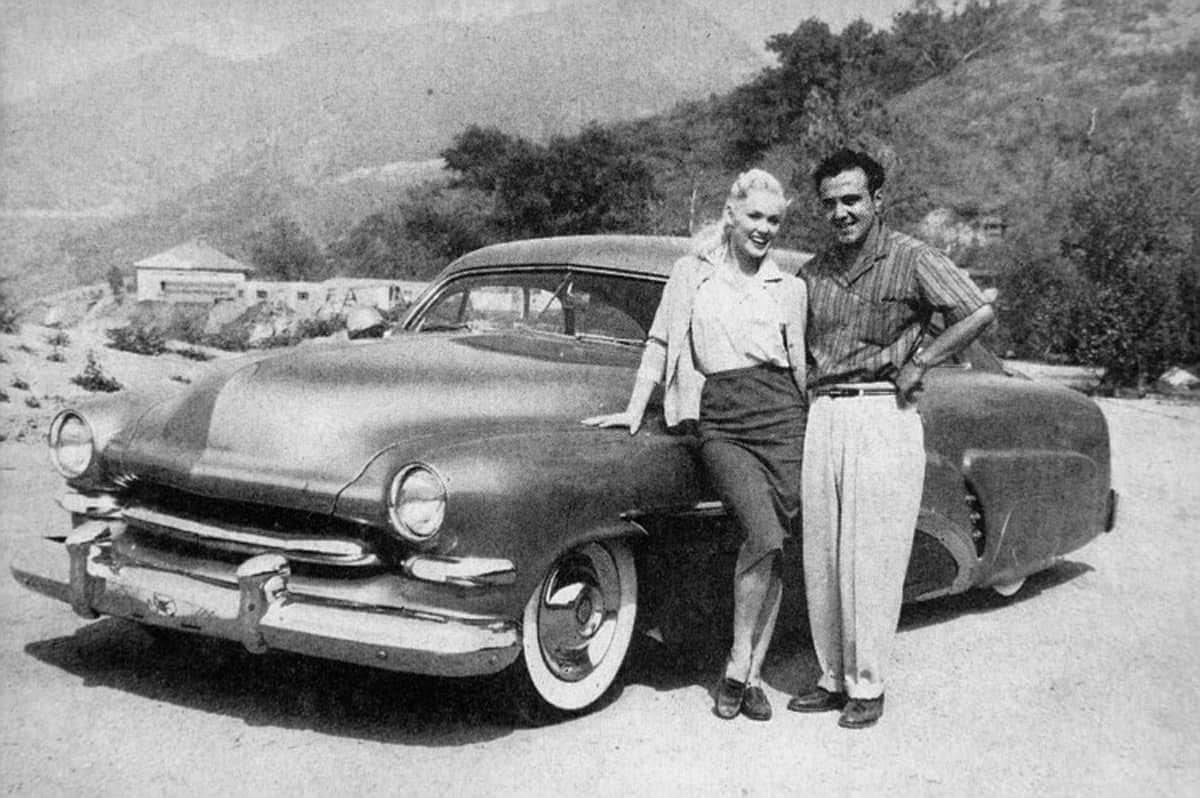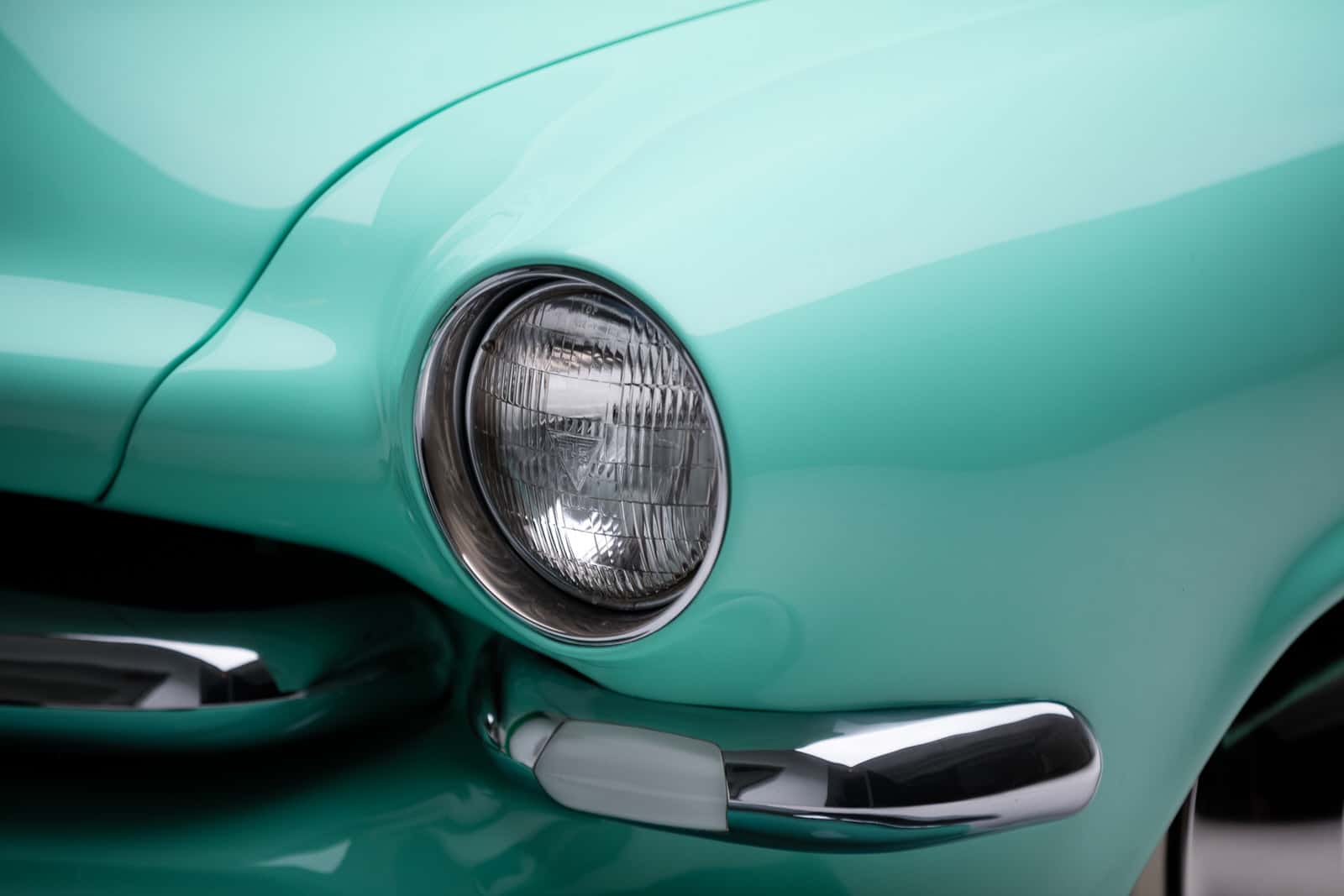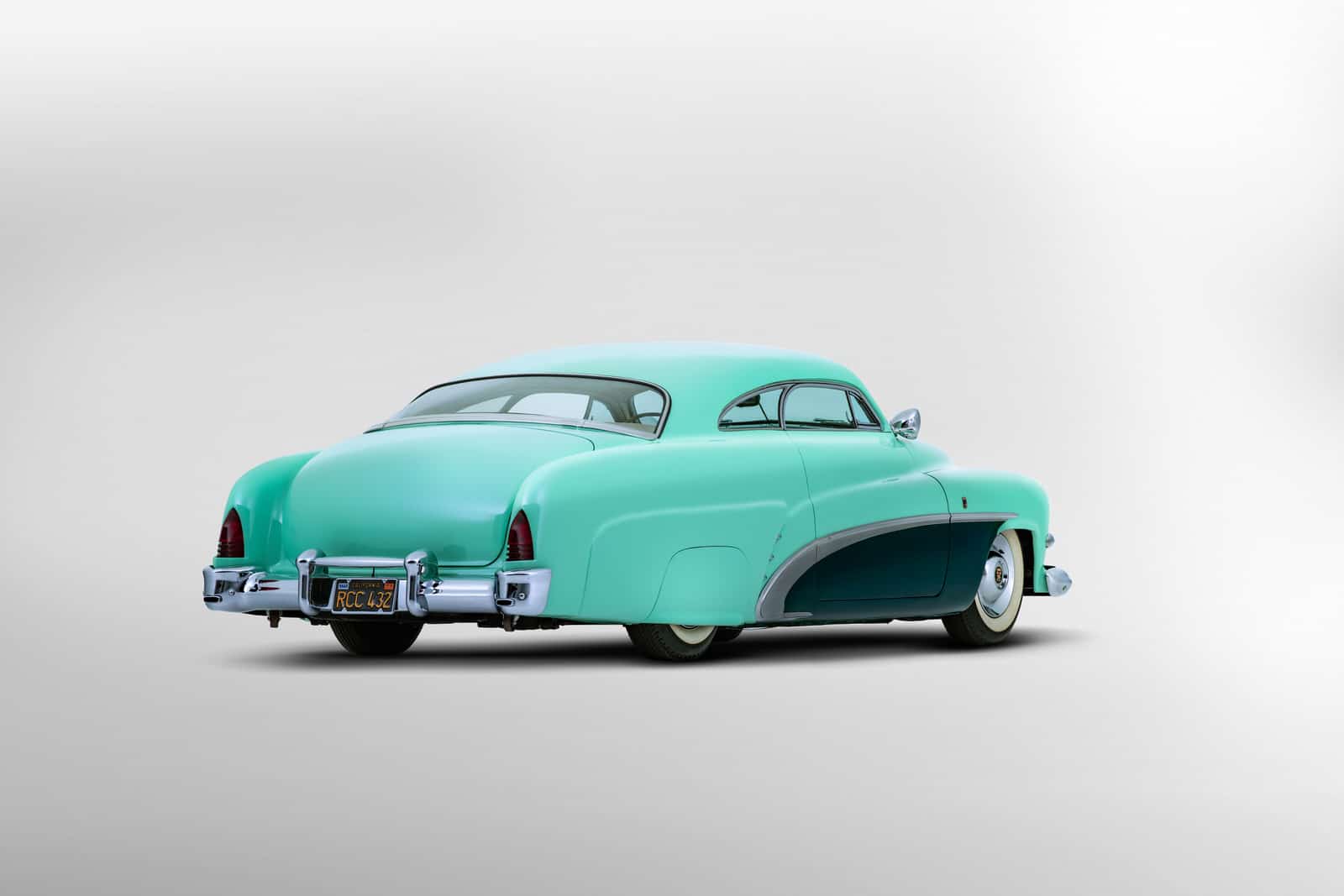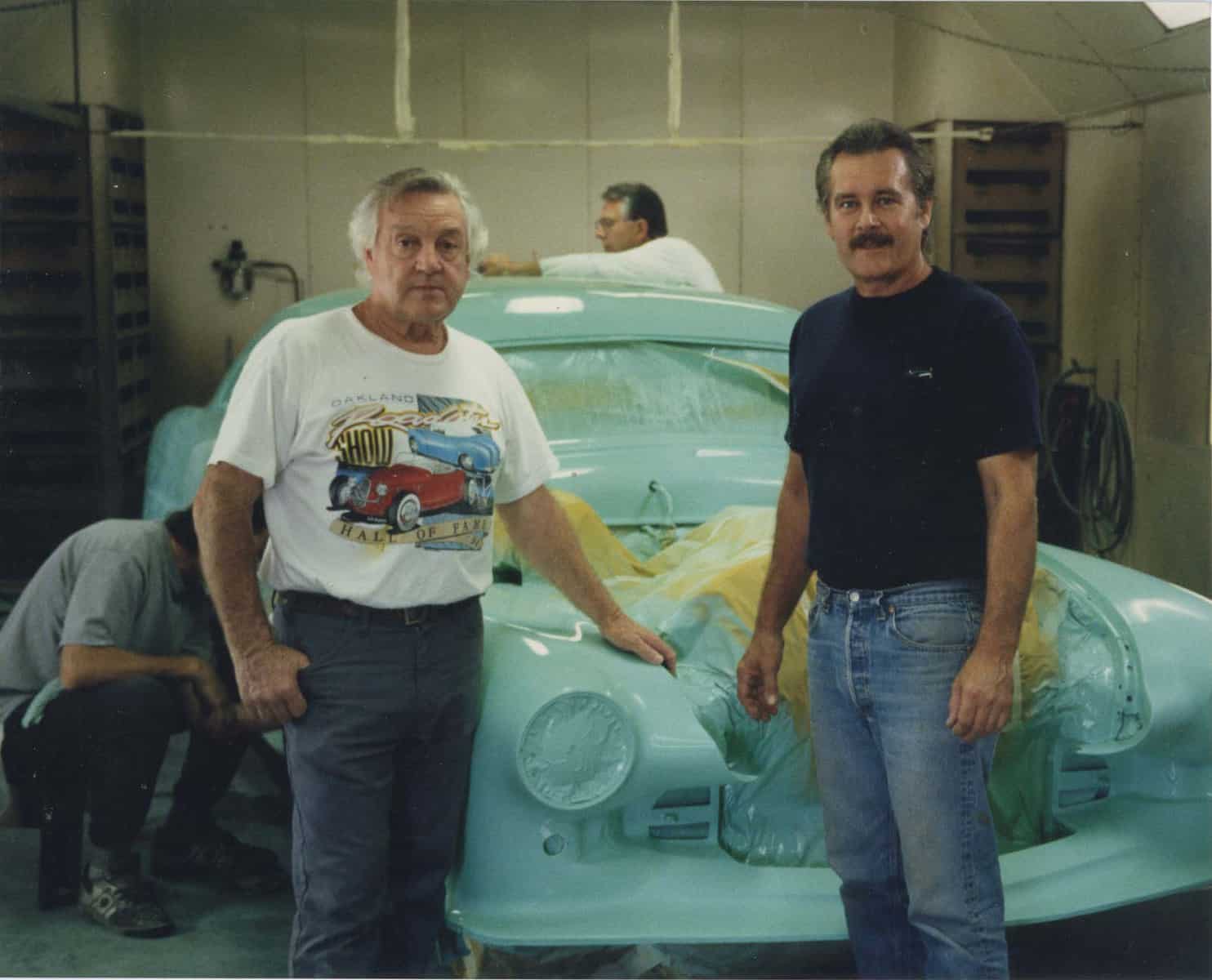Emerald Icon from a Lost Era
The Saga of the Hirohata Mercury
BY: KEN GROSS
PHOTOS: HISTORIC VEHICLE ASSOCIATION
Even if you don’t know anything about custom cars, you have to admire the audacity of this pale-green jewel on wheels.
Hand-crafted in mid-century by some of the best talent in the business, featured in countless magazines, a scene-stealing Hollywood B-movie star, this stunning car was highly acclaimed in its heyday. But over time, its first owner was murdered in a drive-by shooting, it fell into disrepair, disappeared for years, emerged as the centerpiece of an exhibit at the Oakland Museum, and starred at the Pebble Beach Concours d’Elegance.
How and why did custom cars emerge?
When World War II ended in 1945, pent-up demand for new model cars drove America’s automobile industry to convert, in record time, from producing war materiel into building civilian vehicles. Deprived of their formative years, returning GIs with saved-up combat pay demanded new wheels right away. So did the gas-rationed and war-deprived civilian population. To meet demand quickly, Detroit’s automakers offered what came to be known as “warmed over” 1942 models: prosaic cars whose styling barely changed from their prewar counterparts. They would differ very little for two more years. Nash, Studebaker, and Hudson were among the first to offer completely new sheet metal. GM, Chrysler, and Ford followed suit in 1948-49.
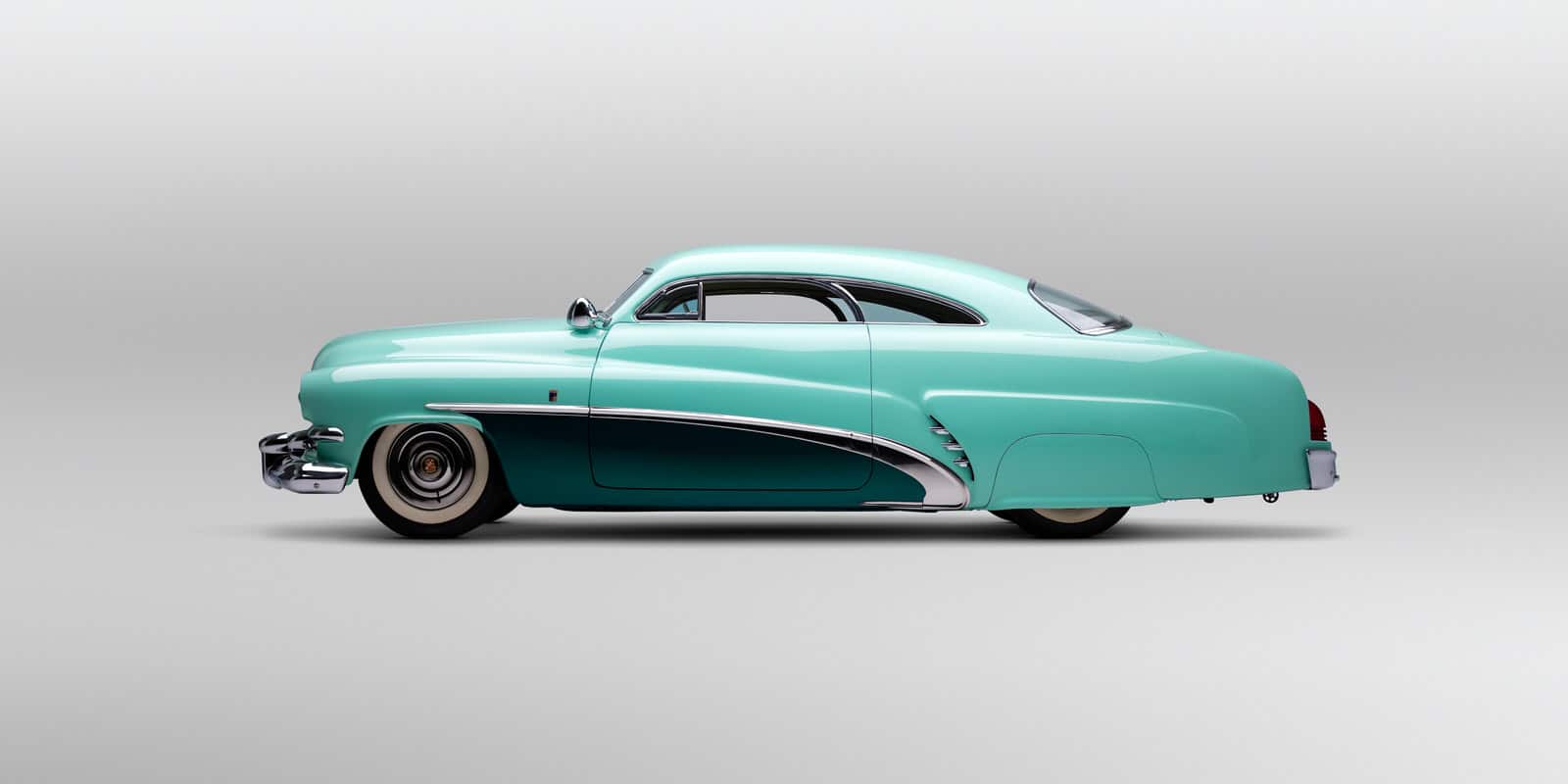
For enthusiasts who hadn’t the means to purchase a new car, restyling an older model or scratch-building a sports custom was a popular alternative. Customizing, known earlier as re-styling, had begun before the war, and a few West Coast shops, like Jimmy Summers and Link Paola in Hollywood; Neil Emory and Clay Jensen, owners of Valley Custom, in the San Fernando Valley; and Harry Westergard in Sacramento were joined by Gil and Al Ayala in East Los Angeles and the prolific Barris Brothers, Sam and George, in Lynwood. Even before Robert E. Petersen’s Hot Rod Magazine, and its companion Motor Trend, featured custom cars, Dan Post’s “Blue Book of Custom Re-Styling,” and a pamphlet from Pennsylvania speed merchant Ed Almquist, showed builders the techniques.
The fundamental premise of customizing was simple, although not everyone got it right. Most production cars of the late 1940s, were staid, bulbous, and dull. The period’s best auto writer, Ken W. Purdy, called them “…turgid, jelly-bodied clunkers.”
Customizing techniques such as lowering and de-chroming, applying metallic paint in deep tones, reshaping fenders, altering grilles, top chopping, and even sectioning – excising a strip of metal from the center of the body for a lower silhouette, grew in popularity. After a fender was reshaped, or a hood or decklid ornament was removed, the hole filling and finish work were accomplished by tinning, then smoothing over holes and panel joints with melted lead filler, hence the derisive term “lead sleds.”
Customizing transformed the look of an older model, making it appear streamlined, more attractive, and when a modified engine was installed, improving performance. Adapting trim, fender skirts, grilles, hubcaps, and bumpers from more expensive brands made low-priced Fords and Mercurys appear sleeker. Soon people began customizing brand-new cars.
When Sam Barris chopped and lowered his nearly new ’49 Mercury coupe, transforming a chunky design into a dramatically modern show car, he began a trend. Almost overnight, as several more “hammered” coupes emerged, the radically chopped and lowered Mercury became a poster child for the burgeoning custom-car movement. Countless artisans modified Mercury coupes, but only a few cars achieved lasting fame.
For 1951, performing what today we’d call a “facelift,” Ford Motor Company stylists extended the rear fenders and redesigned the grille on the ’49-to-’50 Mercury, for a more distinctive silhouette. Customizers immediately began work on the “updated canvas.” This famous Barris Kustom-built, hard-topped 1951 Mercury, built for Los Angeles native Robert “Bob” Hirohata, and copied many times, has long been considered the definitive early “lead sled.”
Putting it another way, there were and still are a lot of Mercury customs. But this is the best one, and then there are all the others.
The Hirohata Mercury won its class in Bob Petersen’s 1952 “International Motorama,” and it was featured in Rod & Custom magazine in 1953, when its owner boldly drove it cross-country from Los Angeles to a major hot rod and custom car show in Indianapolis, where it won “Best Custom,” of course.
It’s difficult to describe the stunning effect this radically restyled Merc had on the customizing community, let alone the people who saw it cruising the streets of Los Angeles, appearing at car shows, and starring in the Hollywood B-movie Running Wild, with Mamie Van Doren, arguably upstaging the film’s “blonde bombshell” starlet.
In the 1950s, the sight of a “classic” chopped Merc, with its almost sinister silhouette, gliding along a darkened street, accompanied by rock and roll music on the radio, and the not-too-discreet rumble of a set of glass-pack mufflers, was enough to set a car-crazy kid’s heart racing. James Dean drove a mildly customized, jet-black ’50 Mercury coupe in his 1955 film Rebel Without A Cause. These cars became popularly known as “James Dean Mercs,” but the tragically short-lived actor, who espoused bikes, MGs, and Porsches, was never a custom-car guy.
George Barris told me that Bob Hirohata showed up one day at his shop with a barely used black Mercury to have it fully customized. He’d purchased the car from an older couple. Barris recalls, “he wanted something different.” Sensing an opportunity, George and his brother Sam were quick to comply.
On Hirohata’s car, the headlights were tunneled – customizers called the technique “frenching” – and the rear fenders received a molded set of ’52 Lincoln lenses. The hood was peaked, extended, and rounded. A shapely one-of-a-kind nose and grille was fabricated, which made the front end appear wider. The front fender openings were flared so the wheels could turn without rubbing. Full fender skirts with flared lower edges were fabricated. Functional rear fender scoops were accented with 1952 Chevrolet grille “teeth.”
This car’s defining feature was its significant roof chop, about four inches in front and seven inches in the rear. The center post, or B-pillar, was eliminated and new curved windows were constructed for a hardtop effect. Earlier, the Barris brothers had similarly “hard-topped” Nick Matranga’s ’39 Mercury coupe, so they’d already experimented with this look. Mercury didn’t offer a pillar-less coupe in 1951, so Barris’ radical surgery made the roofline appear cleaner and updated the car’s appearance.
To break up its slab sides, the Mercury’s original designer, E.T. “Bob” Gregorie penned a subtle reveal that gently dipped partway along the side of the car, reminiscent of the sheer line of a yacht. For a more dramatic accent, Sam Barris affixed chrome trim spears from a ’53 Buick and used that divider to separate the car’s original shades of light and dark green lacquer. A pair of Appleton spotlights, tilted toward the hood, completed the modifications.
Pat Ganahl, author of “The American Custom Car,” wrote that “the Hirohata Merc began the era of redesign and ornamentation that would soon get completely out of hand; the Hirohata did it with integrity and some subtlety.”
Extensive lowering brought the coupe down to about a five-inch ground clearance, enhancing its already low silhouette. Front spindles and coils were modified; rear lowering blocks were fitted with longer U-bolts to hold them in place; the parallel leaf springs were de-arched; and a C-section was performed in the rear frame rails, to ensure sufficient axle travel.
George Barris said the cost of the work was “about $3,500.” That was a lot of money in 1952. To make the Motorama date, the work was completed in just ninety-seven days. Most radical Mercury customs in that era were finished in dark maroon metallic or dark green. With its pale pastel, ice-green light-over-dark treatment, the Hirohata car stood out from the rest. Bob Hirohata told a Rod & Custom editor he was “shocked” when he got the bill. “I had to sell everything I owned and put my great aunt in hock to pay for the car, but it was worth it.”
Inside, a luxurious, green-and-white tuck and roll interior by Glen Houser’s Carson Top Shop was complemented by laminated teardrop-shaped knobs in green and white plastic. Hirohata made these himself, and the unique knobs would later be the subject of a magazine “how-to” feature. The trunk was upholstered by Gaylord, another noted Los Angeles trimmer. And the renowned pinstriper Kenneth Howard better known as “Von Dutch,” discreetly striped the dash panel and the glove compartment two years later.
For his cross-country trip, Hirohata replaced the stock flathead with a 1953 Cadillac V-8 that was installed in a week by Dick Lyon of Lyon Engineering. The Hirohata Mercury was featured on the covers of Hop Up and Motor Trend in 1953. It became a consistent winner with nearly 200 awards. Although other custom cars had begun to look excessive, even freakish, because car show judging awarded points for every modification, no matter how slight, each element on this Mercury flows together perfectly.
Bob Hirohata occasionally drove his seminal custom to his job at the parking lot for the Hirohata Insurance Company that his family owned in “Little Tokyo.” He later offered the car in a Hot Rod Magazine classified ad in the May 1955 issue. The asking price was $4,900; the selling price was somewhat less. Bob Hirohata was tragically murdered on May 14, 1981, execution style, in his parents’ driveway in California’s Temple City. His slaying was never solved.
During his extensive search for information, Pat located and befriended the car’s longtime owner, Jim McNeil, who’d bought the historic Mercury custom in 1959 for just $500 from a used-car lot, drove it during high school, dated his high-school sweetheart (later his wife) Sue in the car, and stored it away for years, intending someday to restore it. It was presumed lost for all time, like several seminal customs. A few of those who did know tried to buy it, but Jim said, “I just couldn’t sell it.”
As the Editor of Rod & Custom, Ganahl knew a good story when he saw one. Over time, he convinced McNeil to restore the Mercury and he helped coordinate the painting with an all-star cast including George Barris, Frank Sonzogni, and Hershel “Junior” Conway, all of whom had worked on the Hirohata car when it was initially built at the Barris Kustom Shop. Bill Lazerlere, a top LA detailer, helped with the finish work. Jim and Sue McNeil, assisted by friends, did the paint prep. Jim himself did nearly all the mechanical work and reassembly. Eddie Martinez redid the upholstery. Jim’s son Scott, his neighbor Murl Redwine, and Chris Kaiser also assisted.
“Pat kind of helped hurry the process,” McNeil told me. “I’d always had it in the garage, then Pat showed up at the house saying he wanted to get Rod & Custom started, and they’d do a report every other month on the progress. I thought that’d be good. But I didn’t want to restore it. I wanted to preserve it.”
He added, “I always intended to do it, but it had to be after I’d raised my family. I decided, except for the paint color, which was the most recognizable feature, I’d do it the way it was when I got it. And I wanted everything to be done right here in my garage – and except for the painting, it was.”
Fortunately, the car’s previous owners had kept the Mercury pretty much intact. “When I first got the car,” McNeil says, “the fender skirts were in the trunk. And it still had everything on it, even the Von Dutch striping, which was put on in ’55.”
With Sue’s enthusiastic help, Jim McNeil, a talented mechanic and painter, painstakingly repaired the ravages of time that had resulted from the car’s fifty-plus-year history. The pair uncovered the original Ice Green and Organic Green Metallic paint hues, buried under several repaints. Stan Betz electronically duplicated them, and PPG formulated the exact acrylic lacquer color, ensuring the team could refinish the car to look just the way it did in 1953.
When Jim took out the dash to rewire the car, he found Bob Hirohata’s and George Barris’ business cards wedged behind the radio speaker, to keep it from rattling. “I never touched them,” he said. “It was important to me that their hands put them there. I didn’t want to change anything that was a link with the builders. I wanted to feel their presence.”
Pat Ganahl described Jim McNeil as the consummate perfectionist, noting: “All the car parts are authentic 1951 Mercury, and the engine parts are original 1953 Cadillac.” It’s hardly surprising that this restoration took a long time, but the results speak for themselves. It’s spectacular and befitting for a car Ganahl has called “the most famous of the classic custom era, if not all time.”
Jim and Sue McNeil generously showed the Hirohata Mercury at many important events, culminating with a re-restoration by Herschel “Junior” Conway and the car’s original builders, a Best in Class win at the 2015 Pebble Beach Concours, and a 2017 display by the Historic Vehicle Association (HVA) on the National Mall in Washington. Sadly, Jim NcNeil and his wife Sue have passed on, but their son Scott maintains the Mercury just as his parents did.
The Custom Car Era has long faded away, but this remarkable survivor entertains and intrigues all who see it.
